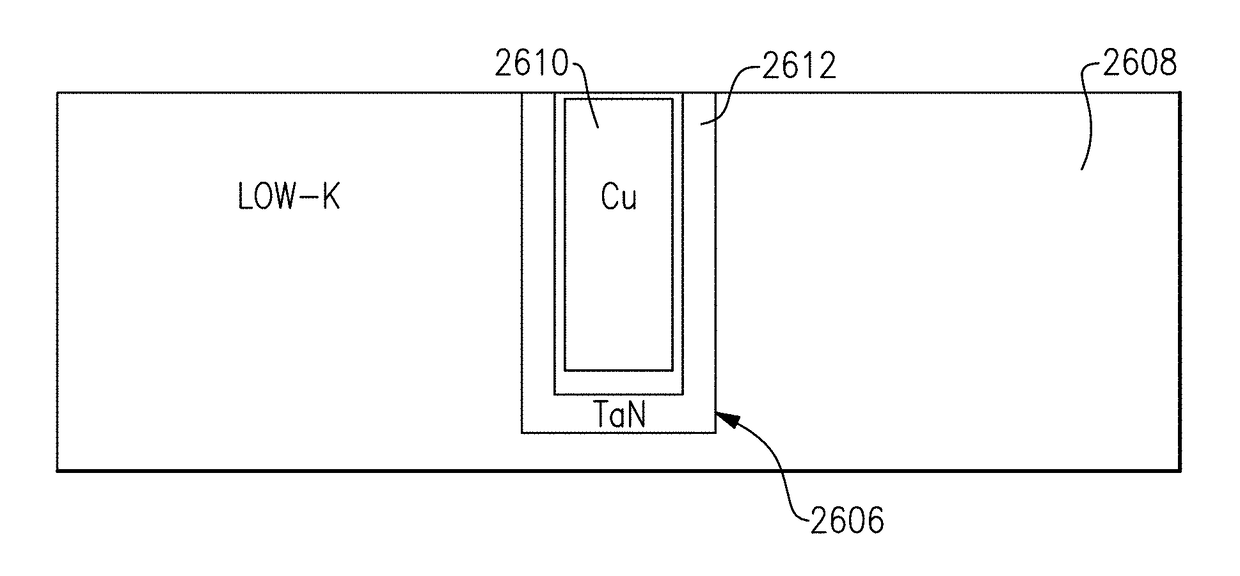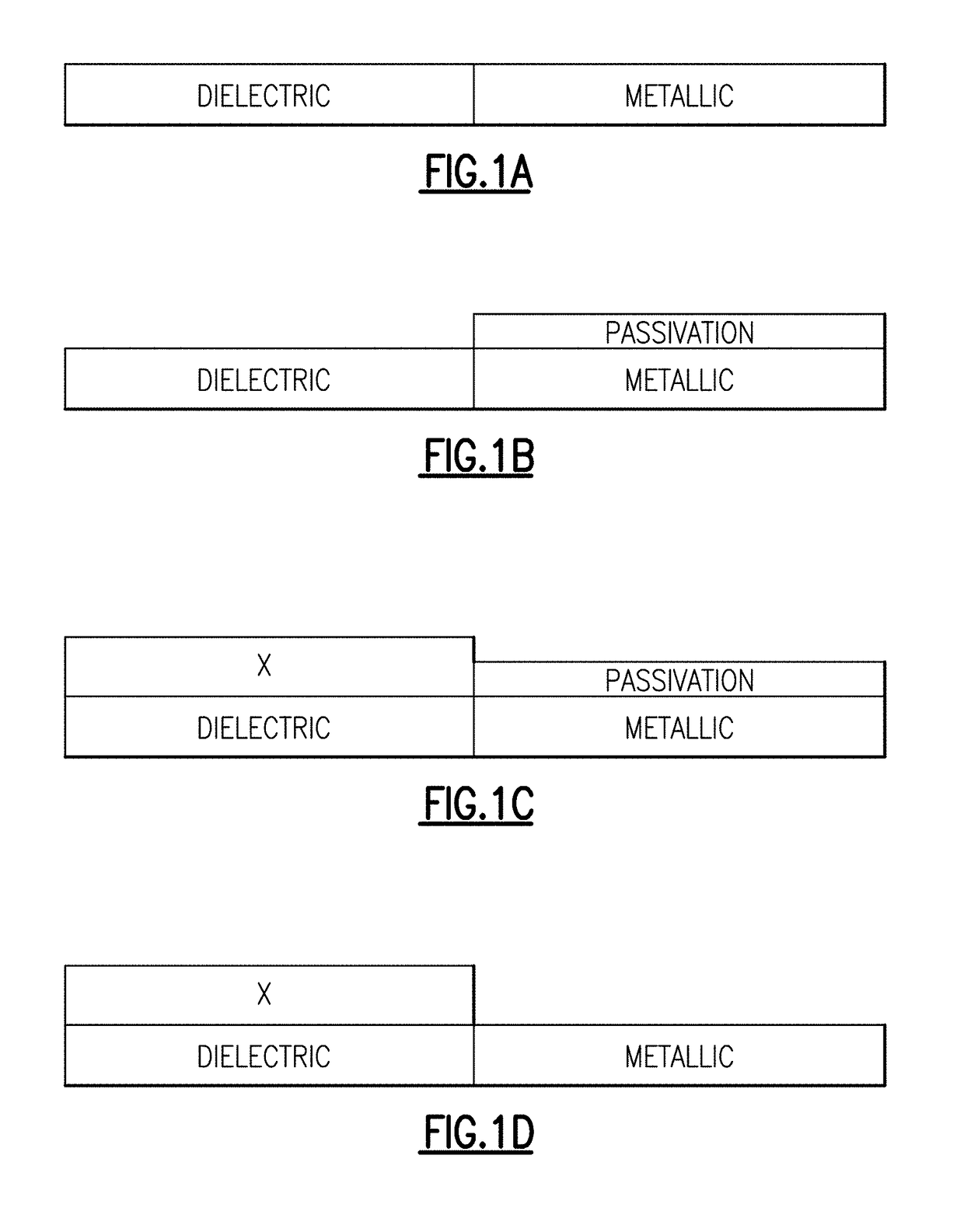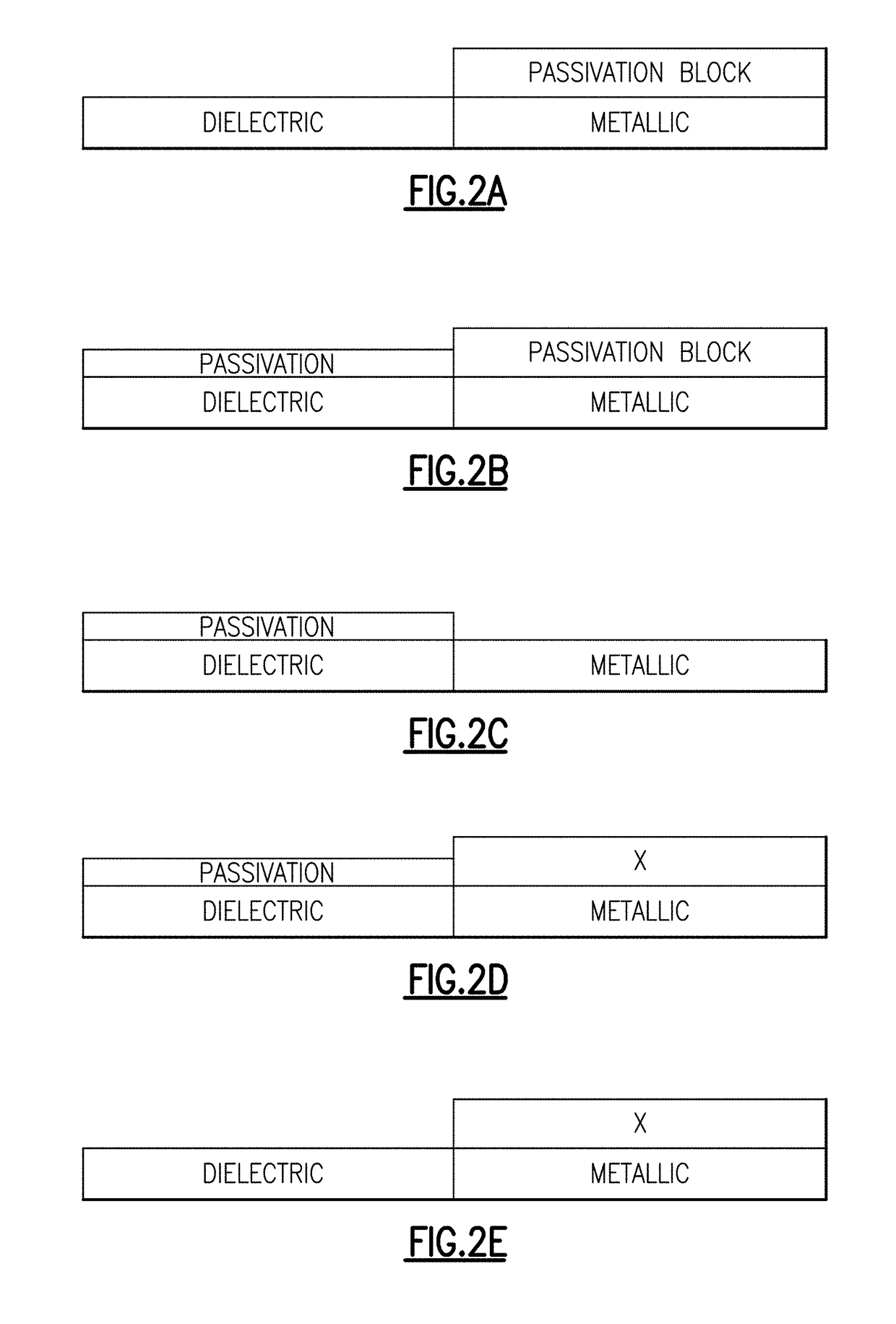Selective passivation and selective deposition
a selective passivation and selective deposition technology, applied in the field of selective deposition, can solve the problems of high selectivity of deposition process, high cost of multi-step lithographic patterning,
- Summary
- Abstract
- Description
- Claims
- Application Information
AI Technical Summary
Benefits of technology
Problems solved by technology
Method used
Image
Examples
example 1
Deposition of Passivation Layer
[0125]Sample polyimide thin layers were deposited on a number of substrates according to selective deposition processes described herein. 200 mm silicon wafers having tungsten (W) features alternated with silicon oxide surfaces were used as substrates. The width of the tungsten features was 250 nm with a pitch of approximately 600 nm. The polyimide deposition processes were performed in a Pulsar 3000® cross-flow ALD reactor connected with PRI cluster tool.
[0126]A first batch of sample polyimide layers were deposited according to the processes described herein using DAH as a first vapor phase reactant and PMDA as a second vapor phase reactant. The DAH first reactant was supplied at 45° C. by an N2 carrier gas having a flow rate of 450 sccm. The DAH pulse time was 5 seconds and the DAH pure time was 4 seconds. The PMDA second reactant was supplied to the reaction chamber at 180° C. by an N2 carrier gas having a flow rate of 450 sccm. The PMDA pulse time ...
example 2
Deposition of Passivation Layer
[0130]A sample polyimide layer was selectively deposited on a 200 mm silicon wafer having patterned tungsten (W) features alternated with silicon oxide surfaces according to the processes described herein using DAH as a first vapor phase reactant and PMDA as a second vapor phase reactant. The DAH first reactant was supplied at 45° C. by an N2 carrier gas having a flow rate of 450 sccm. The DAH pulse time was 5 seconds and the DAH pure time was 4 seconds. The PMDA second reactant was supplied to the reaction chamber at 180° C. by an N2 carrier gas having a flow rate of 450 sccm. The PMDA pulse time was 11 seconds and the PMDA purge time was 4 seconds. The reaction temperature was 190° C. The polyimide sample layer was deposited using 1000 deposition cycles. The polyimide was deposited on the W surface, with a layer thickness of about 30 nm. A substantially lesser amount of polyimide was deposited on the silicon oxide surface, about 4 nm.
[0131]The sample...
PUM
 Login to View More
Login to View More Abstract
Description
Claims
Application Information
 Login to View More
Login to View More - R&D
- Intellectual Property
- Life Sciences
- Materials
- Tech Scout
- Unparalleled Data Quality
- Higher Quality Content
- 60% Fewer Hallucinations
Browse by: Latest US Patents, China's latest patents, Technical Efficacy Thesaurus, Application Domain, Technology Topic, Popular Technical Reports.
© 2025 PatSnap. All rights reserved.Legal|Privacy policy|Modern Slavery Act Transparency Statement|Sitemap|About US| Contact US: help@patsnap.com



